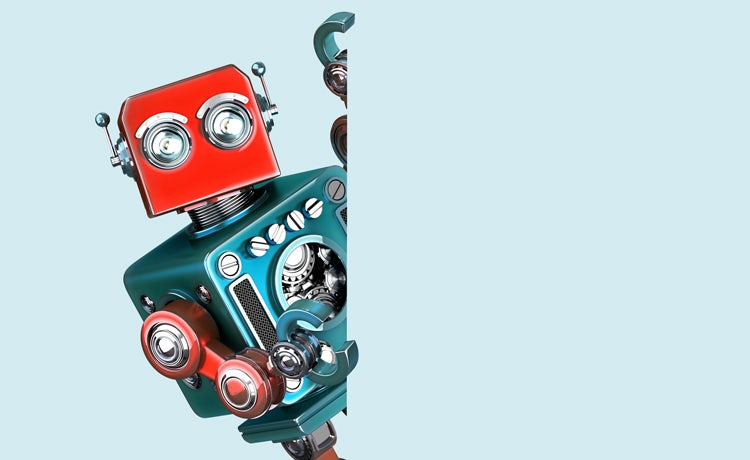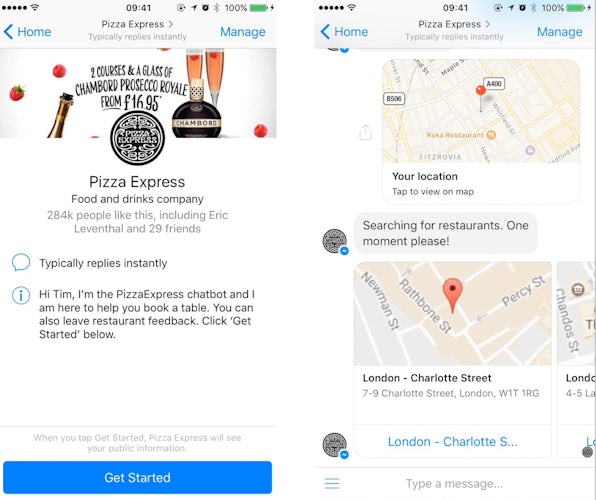Robots, smart content and the Amazon Echo effect – a marketer’s takeaways from SXSW
The annual technology festival is no longer the domain of digital specialists, there’s plenty to note for traditional marketers too, says Sara Holt, digital marketing director in Lego’s global marketing and product development team.

The South By Southwest (SXSW) festival is a whirlwind best described as “trying to drink from a firehose”. There is so much happening at any one moment you have a real fear of missing out.
Even though this was my third visit, the challenge of navigating the schedule to ensure you find the gems while making time to meet some of the most brilliant minds in tech, digital and content creation can be overwhelming.
These are my key take-outs from this year.
Just because you can doesn’t mean you should
Robotics is moving at a rapid pace but still the sheer oddness and impracticality of what I saw was at times astounding. The best example for me was presented by Japanese Communication giant NTTS’s Dr Higashinaka and roboticist Dr Ishiguro who have built life-sized robotic humanoid models that can have basic conversations with humans.
The technology behind it is little more than a simple decision tree that means the humanoid picks up on key words and responds in a number of ways. All technology needs to fulfil a human need and better than before – crucially if you are commissioning as a brand. These robotics didn’t.
There is plenty of AI and machine learning already happening that fulfils human needs. For example, the latest cyber machine learning that aims to stop fraud and malicious code spreading. The creators have no idea why but the software identifies polymorphic malicious code before it does any harm.
In the marketing world, machine learning for programmatic and serving up personalised ads is moving at pace. Currently the cost by acquisition for really deep personalisation is really high but give it time.
Amazon Echo is changing everything and fast

Amazon Echo came up in discussions about search innovation, ecommerce, chatbots and elsewhere. A panel consisting of scientists and technologists on the subject of wearable technology suggested how it could reach its full potential. If you could imagine a world where your main interface with a computer is via sound you can start to see it.
Take away computer screens, apps, and mobiles and imagine a device that understands your thoughts and environment almost as well as you. Hearing aids are powerful devices, combine their intelligence with machine learning, environmental data and Echo’s ability to take your requests immediately and you understand where things may be headed.
The real headline is the speed at which this is growing and becoming normal. Last Christmas, Echo was the most downloaded app in the US App Store.
Hearing aids are powerful devices, combine their intelligence with machine learning, environmental data and Echo’s ability to take your requests immediately and you understand where things may be headed.
Functional brands like Just Eat, Uber and others are already receiving high volumes of orders while media brands such as the Washington Post are quoting Echo engagement numbers alongside those from Facebook.
However, the true breakthrough will be when a brand can integrate it into their homes and fulfil a deeper, higher order need. Imagine millennial parents with small babies in need of help but isolated at home. If brands can penetrate in a useful way and provide a meaningful service they will win out. The race is really on here.
Content marketing is evolving
The Washington Post’s chief information officer Shailesh Prakash explained how it has built technology that automatically optimises headlines, adds manual and data-heavy copy (like election results) and gives guidance within every 30 minutes on which articles the newsroom should be creating more of.
When asked if he was trying to remove the need for journalists his response was apt “we are freeing them up to focus on quality journalism, quality writing, videos and being at the forefront of the action. The more quality content we make, the more people who engage and see it”.
READ MORE: Rise of the machines – Are robots after your job?
National Geographic shared how its Instragram account has received more followers and greater reach then any other platform. Put simply, it has given the keys to its account to 105 pre-vetted amazing photographers, providing guidelines but giving the photographers complete freedom.
Viral content site Upworthy described how in recent times its focus on quality journalism means its ability to target millennial parents and receive high engagement numbers was rising. The days of cute cat posts being the main way to receive deep engagement have gone.
Although SXSW may lack the glamour it is more global and of greater use to the more studious marketer.
Marketers from very traditional sectors are also discussing content partnerships. Reckitt Benckiser’s head of digital described how for low interest categories smart content partnerships have led to huge spikes in brand health and favourability for even the dullest of products. Digital partnerships are increasingly being discussed as a main route to market.
READ MORE: How RB is ‘closing the orgasm gap’ with Durex
My mantra for modern marketing for some time has been ‘build smart content and put it in smart places’. It remains really easy to say but really hard to do but never before has it been so relevant.
Chatbots are no longer niche
If someone in your team hasn’t built or is only in the early stages of building one then you had better start. At SXSW this year chatbots were talked about in practical workshops, included in decision trees, use cases, wireframes and in best practice examples.
They have become more than normal. A top global digital agency said the amount of chatbot work they are doing is off the scale. There is also a rich desire to learn. Chatbots featured in about 10% of the marketing-related sessions.
If you are a service brand, have communities on social or any IP with characters or have a need to build branded content you better get on it. Everyone else is.
Technology is the business of all marketers
The type of marketer that visits SXSW is changing. This year saw an interesting mix of those tasked with innovation and traditional brand marketers. For example, Unilever was represented by its startup incubator Unilever Foundry, as well as brand managers and marketing directors.
It is now more useful than Cannes. There you get sucked into spending time with the people and agencies you know. By contrast, although SXSW may lack the glamour it is more global and of greater use to the more studious marketer. The people you meet are those you wouldn’t ordinarily find anywhere else.
If you are a brand or content marketer, attending SXSW is critical. Raising your head above the parapet of what you know and the internal politics of who owns what in the world of digital is important.
Traditional marketers own the future of communication as much as digital specialists. Even if you glean just one insight that puts you ahead of the curve. It will make you embrace the seismic shifts that are likely to impact your job and the lives of your customers in a balanced and measured way ahead of the curve and before it’s too late.
Sara Holt is digital marketing director in Lego’s global marketing and product development team.






